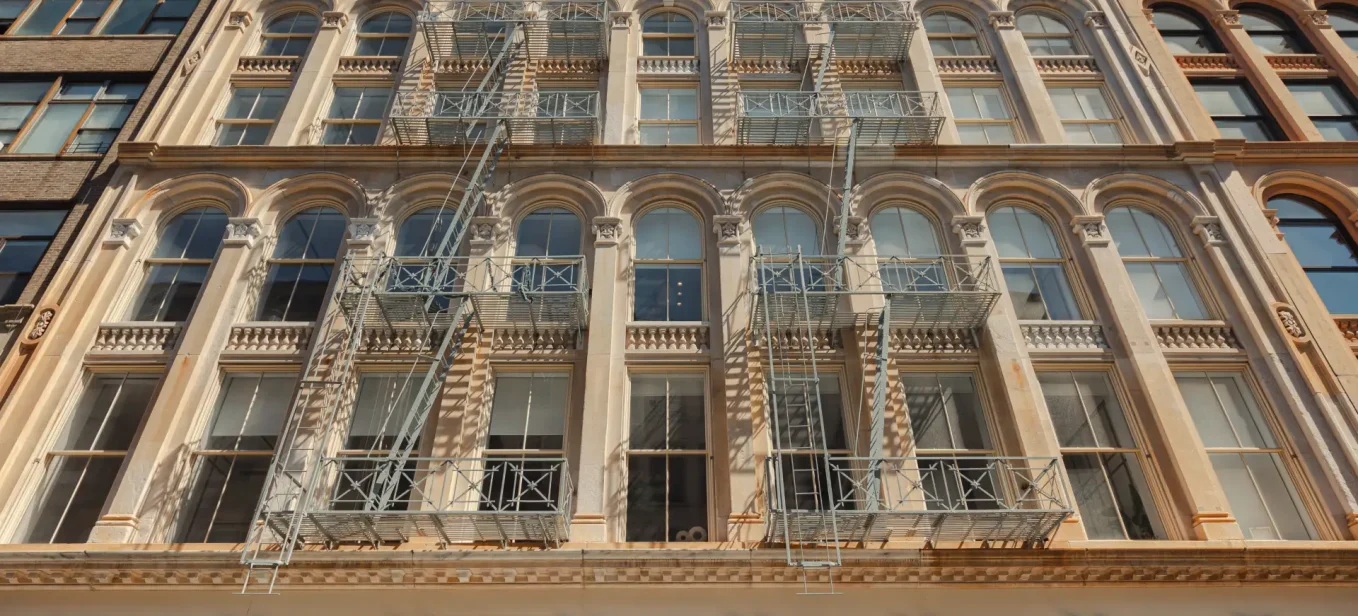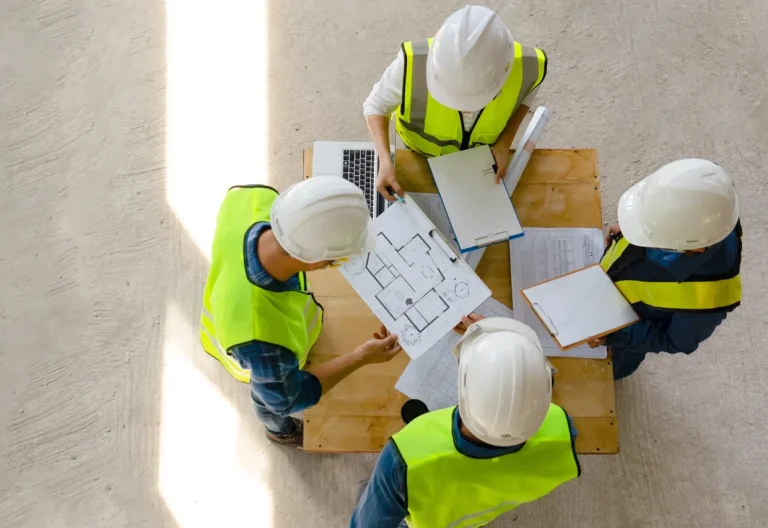
What to Expect During a Local Law 11 Inspection
- By: Nova Construction Team
- Published:
- Updated: December 2, 2025
Local Law 11, now known as the Facade Inspection Safety Program (FISP), is a crucial regulation for building safety in New York City. It mandates that buildings taller than six stories must undergo thorough facade inspections every five years.
Born out of tragedy and refined through experience, Local Law 11 plays a vital role in ensuring the safety of New York’s residents and visitors. With over 14,000 buildings subject to its protocols, understanding this law is essential for building owners, managers, and residents alike.
Here’s how to comply with Local Law 11.
Pre-Inspection Preparation
Preparing for a Local Law 11 inspection requires careful planning and organization.
The first step is toselect a Qualified Exterior Wall Inspector (QEWI). It’s crucial to choose a reputable QEWI or contractor with extensive experience in facade inspections.
Once you’ve selected your QEWI, the next step is to gather all necessary documentation. It includes building history and architectural plans, records of past inspections and repairs, and permits for any recent facade work or alterations.
Having these documents readily available will streamline the inspection process and provide valuable context for your QEWI.
Preparing access points for inspection is another critical step. Ensure that balconies, terraces, and roof areas are clear of any obstacles. Fire escapes should be easily accessible.
Communication with tenants and occupants is crucial during this preparation phase. Inform residents about the upcoming inspection, provide a timeline for the process, and address any concerns or questions they may have.
For more detailed information on meeting Local Law 11 deadlines and compliance requirements, be sure to check out our article on “Local Law 11 Compliance: Deadlines and How to Meet Them”.
The Inspection Process
The Local Law 11 inspection is a comprehensive examination of your building’s exterior. Here’s what you can expect during the process:
Visual Examination
The QEWI will conduct a thorough visual inspection of all exterior walls and appurtenances. This includes:
- front facade
- side walls
- rear walls (if accessible)
- balconies, fire escapes, and other attachments
Close-Up Inspection
Unlike earlier regulations, Local Law 11 requires a hands-on examination from scaffolding or other close-up vantage points. This ensures that even minor defects are identified and addressed.
Focus Areas
The inspectors typically focus on:
- structural integrity of the facade
- water damage and signs of leaks
- cracks and deterioration in masonry
- loose or missing components
- condition of balconies and fire escapes
- window frames and sills
- cornices and parapets
It’s important to note that the QEWI must be physically present during the inspection, either conducting or directly supervising the process.
Understanding the potential consequences of neglecting these inspections is crucial. Our article on “Consequences of Ignoring Local Law 11” provides valuable insights into the risks and penalties associated with non-compliance.
What Inspectors Look For
During a Local Law 11 inspection, QEWIs are trained to identify a wide range of potential issues. Here are some key areas they focus on:
Structural Integrity Issues
- Cracks in masonry or concrete.
- Bulging or displaced bricks.
- Corroded steel lintels or shelf angles.
Water Damage and Deterioration
- Efflorescence (white, powdery deposits on masonry).
- Spalling concrete or brick.
- Deteriorated mortar joints.
Loose or Unsafe Components
- Loose bricks or stones.
- Unstable balcony railings.
- Improperly secured air conditioning units.
Inspectors will document their findings with detailed notes and photographs. They pay special attention to areas that pose immediate safety risks to pedestrians or occupants.
For a deeper dive into one of the key classifications in Local Law 11 inspections, don’t miss our article on “Understanding SWARMP in Local Law 11”. This will help you better interpret your inspection results and plan for necessary repairs.
Post-Inspection Procedures
FISP Report Categories
The report will classify your building’s facade into one of three categories:
- Safe: No problems or safety issues detected. No immediate action is required.
- Safe with a Repair and Maintenance Program (SWARMP): Minor issues that need attention have been identified. Repairs must be completed before the next inspection cycle.
- Unsafe: Serious defects or safety hazards are detected. Immediate action is required to protect public safety.
For a more in-depth look at the SWARMP category, which often causes confusion, refer to our article on “Understanding SWARMP in Local Law 11”.
Addressing Identified Issues
The timeline for addressing issues depends on the classification:
- For SWARMP conditions, repairs must be completed before the next inspection cycle. This gives building owners some flexibility in planning and budgeting for repairs.
- Unsafe conditions require immediate action:
- public protection (e.g., sidewalk shed) must be installed within 24 hours
- repairs must be made within 30 days of the inspection
Adhering to these timelines is non-negotiable. It’s the only way to ensure public safety and avoid penalties.
For more information on meeting these deadlines, check out our article on “Local Law 11 Compliance: Deadlines and How to Meet Them”.
Compliance With Inspection Requirements and Potential Penalties
Adhering to Local Law 11 requirements is not just about safety — it’s also about avoiding costly penalties.
Filing Fees
- $425 filing fee per new FISP report
- $425 for amended reports or subsequent reports
- $305 for an extension request
While these fees are relatively modest, they should be factored into your overall compliance budget.
Penalties for Non-Compliance
- late filing: $1,000 per month
- failure to file an initial report: $5,000 per year
- failure to correct SWARMP conditions: $2,000
For unsafe conditions left uncorrected, penalties escalate over time.
| Delay | Base Penalty | Additional Penalty |
| 1 year | $1,000/month | – |
| 2 years | $1,000/month | $10/linear foot of shed per month |
| 3 years | $1,000/month | $20/linear foot of shed per month |
| 4 years | $1,000/month | $30/linear foot of shed per month |
| 5+ years | $1,000/month | $40/linear foot of shed per month |
Got a project in mind? Let's chat about bringing your construction vision to life!
Conclusion
Local Law 11 inspections play a crucial role in maintaining the safety and integrity of New York City’s buildings.
By understanding what to expect during these inspections and how to prepare for them, building owners and managers can maintain the value and marketability of their properties and avoid costly fines.
Remember,proactive maintenance is key. Regular upkeep and addressing minor issues as soon as they appear can prevent more serious problems from developing.
At Nova Construction Services, we specialize in guiding building owners and managers through the Local Law 11 compliance process. From pre-inspection preparation to post-inspection repairs, our team of experts ensures that your building remains safe, compliant, and well-maintained.







